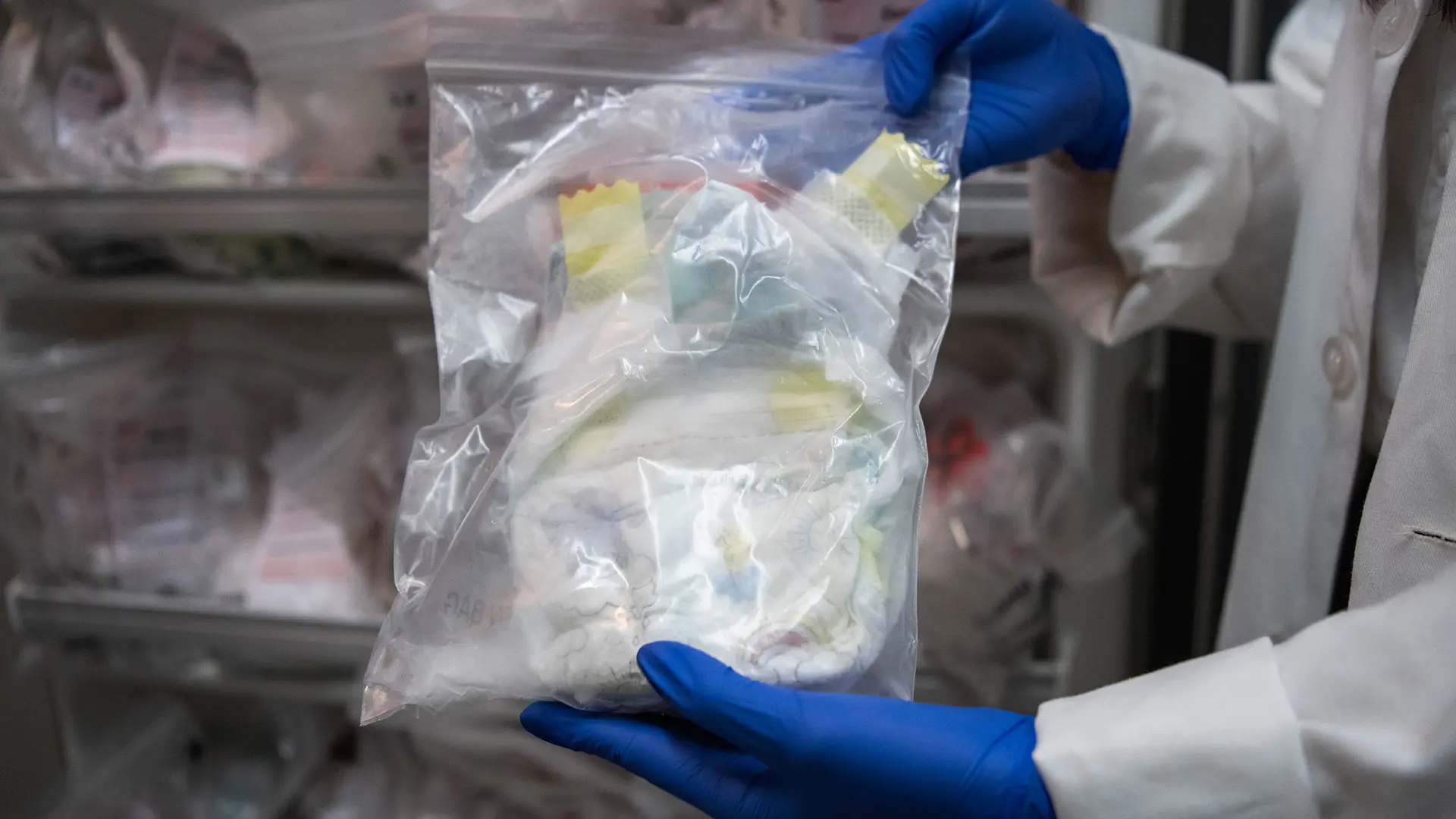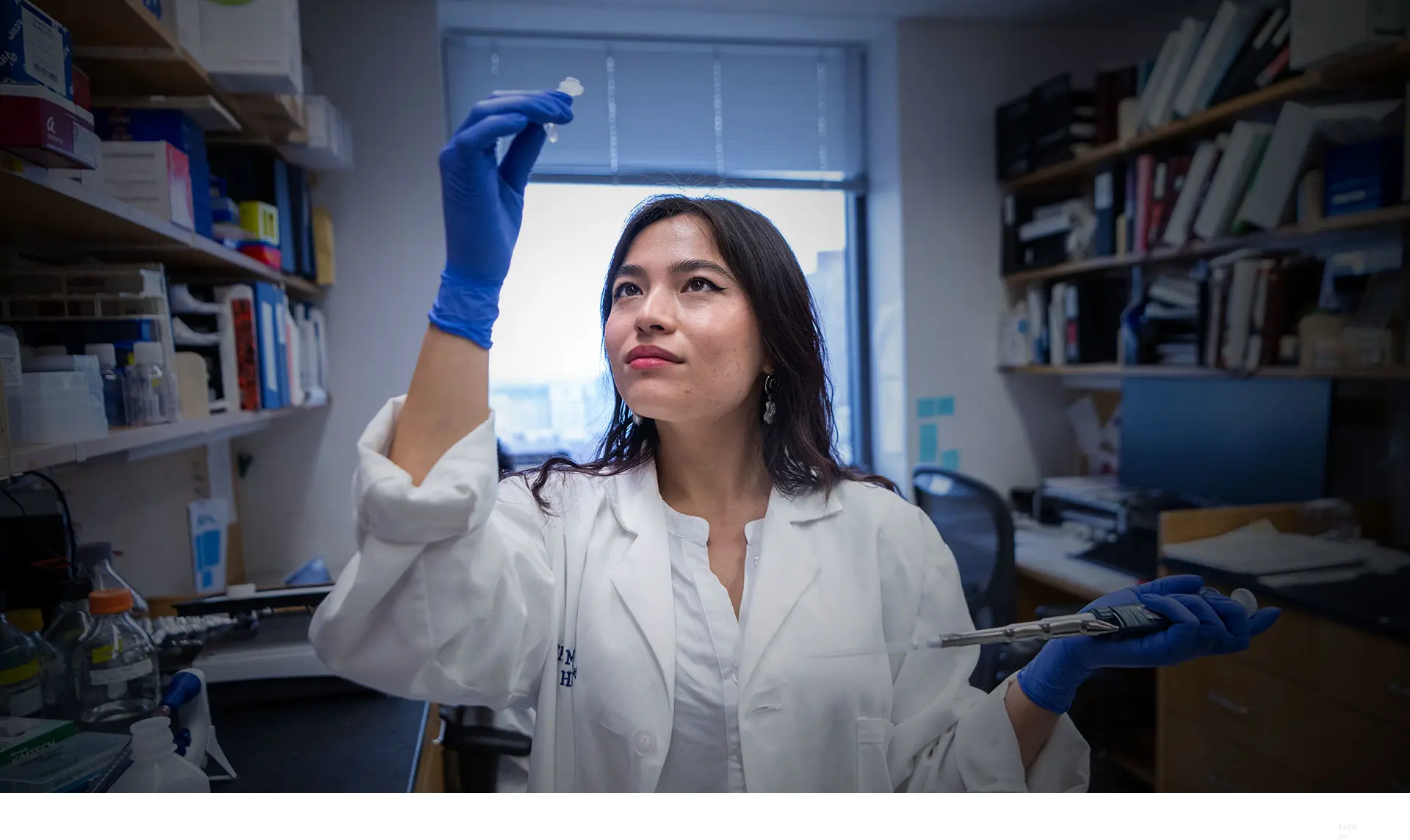The case against microplastics is growing. In recent years, researchers have found these microscopic particles in tissues throughout the human body. Among their possible impacts, microplastics have been linked to intestinal inflammation and changes to the microbiome, raising questions about whether the particles may contribute to inflammatory bowel disease (IBD). Manasi Agrawal, MD, MS, Assistant Professor of Medicine (Gastroenterology), and Environmental Medicine, at the Icahn School of Medicine at Mount Sinai, aims to answer those questions.
Dr. Agrawal studies environmental pollutants that may contribute to the risk of inflammatory diseases such as IBD. Microplastics have earned their place on the suspect list.
“Many studies are finding microplastics in different human biological samples, including the liver, kidney, brain, placenta, and the intestinal tract,” she says. “And growing data suggest they may have negative effects on a variety of human health outcomes.”
Microplastics are pervasive. They are ubiquitous in our daily lives: in packing materials, clothing, personal care products, even tire dust on the streets. Thanks in large part to plastic containers and packaging for food and drink, ingestion is the main source of exposure to microplastics. And as those swallowed particles work their way through the digestive tract, they can have serious implications for gut health.

Microplastics come in many different forms but are ubiquitous in the environment, are frequently ingested, and have significant implications for gastrointestinal health.
In 2024, Dr. Agrawal and colleagues published a literature review in Science of the Total Environment, which found that microplastics and nanoplastics were linked to intestinal inflammation and changes in the microbiome that could lead to IBD. However, much of the data came from animal research and in vitro studies, and human research was limited. Dr. Agrawal set out to learn more.
The PLANET Study
Dr. Agrawal collaborated with Inga Peter, PhD, Vice Chair of the Department of Genetics and Genomic Sciences at the Icahn School of Medicine, and other colleagues to launch the PLANET (Exploring the Role of Plastics and Toxins in Intestinal Inflammation) Study. The study aims to explore the role of microplastics and other toxins in intestinal inflammation, beginning in fetal development and continuing into childhood.
In a pilot project, the team recruited 40 pregnant participants, 20 with IBD and 20 without. During the pregnancies, the researchers collected survey data about the participants’ health histories, lifestyles, and exposures to microplastics in their daily lives. They collected stool samples to measure fecal calprotectin, a biomarker indicating intestinal inflammation and changes to the gut microbiome. Additional microbiome analysis will be done using metagenomics.
The researchers also measured microplastics in the women’s stool samples—an effort that required the researchers to develop a rigorous new sampling methodology. Traditional sampling uses plastic containers and equipment. But those tools could contaminate samples and potentially bias the results. Dr. Agrawal and her team collaborated with experts at the Department of the Built Environment at Aalborg University in Denmark to develop a rigorous sampling protocol. The method used glass and metal collection containers and tested “blanks” to account for any microplastics present in the ambient environment. The team also devised a multistep testing procedure to identify the types and quantities of microplastics in the samples.
After participants delivered their babies, the researchers also collected samples from their placenta, cord blood, and breast milk to assess for the presence of microplastics. Moving forward, they will follow the babies, regularly collecting stool samples to track microplastics and fecal calprotectin levels with the intention of exploring relationships between maternal exposure and their children’s risk of IBD. The goal is to follow the children for at least 10 years—and ideally longer, as funding allows.

The research team analyzed stool samples from 20 participants and found microplastics in all of them.
Preliminary Findings: Microplastics in the GI Tract
The study and sample analyses are ongoing, but preliminary investigations point to some notable findings. The researchers started by analyzing stool samples from 20 participants and found microplastics in all of them. “We found many different types of plastic, and there was a broad range. Some mothers had few microplastics, some had large amounts,” Dr. Agrawal says. “But a clear takeaway is that mothers are certainly exposed to microplastics during pregnancy, and those microplastics are present in their intestinal tracts.”
Their results also suggested that high levels of microplastics may be associated with higher levels of intestinal inflammation, as measured by fecal calprotectin. However, she cautions that the sample size was small, and more data are needed to establish a clear connection. She adds, “There is enough evidence for us to do a deeper dive into this question to better understand the connection.”
Looking Ahead at Microplastic Research
In addition to exploring the link among inflammation, IBD, and the levels of microplastics, the team plans to explore associations with different types of plastic, each of which has its own chemical makeup. They will also examine participants’ behaviors to understand which activities are likely to increase or decrease exposure to microplastics during pregnancy. And they will follow the babies born to the pregnant participants to explore how exposure during fetal development and early life affects IBD risk.
Many questions remain, Dr. Agrawal says, including whether microplastics increase the risk of developing IBD and whether exposure in people who already have IBD might contribute to disease flares. She is also exploring the possible role of other environmental pollutants, such as PFAS, the “forever chemicals” used in products such as clothing, furniture, cleaning products, and cookware. “My goal is to map out the role of environmental pollutants as they relate to intestinal inflammation and IBD so we can make progress toward prevention,” she says.
While she cautions patients and gastroenterology colleagues not to overinterpret these early findings, she says it is not too soon to consider making changes to minimize plastic exposures. “We shouldn’t worry about completely altering our lives, but it is worth considering small steps, such as reducing single-use plastic bottles and avoiding heating up foods in plastic takeout containers,” she says.
Meanwhile, she encourages her research colleagues to continue exploring the role of environmental pollutants in IBD and other disease processes. She will be alongside them, doing her part to connect the dots. “We have to pay attention to the exposome, or our environmental exposures, if we really want to map out what causes chronic diseases,” she says.

From left: Mellissa Picker, project manager; Isabella Nguyen, clinical research coordinator; Dr. Agrawal; and Dr. Peter
